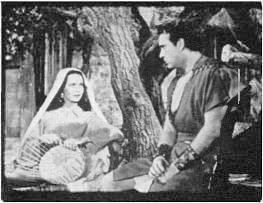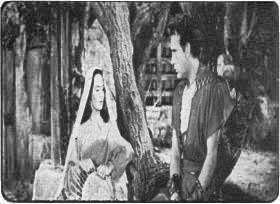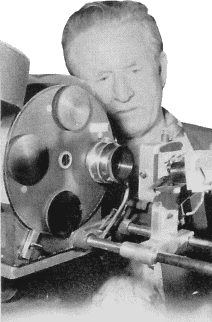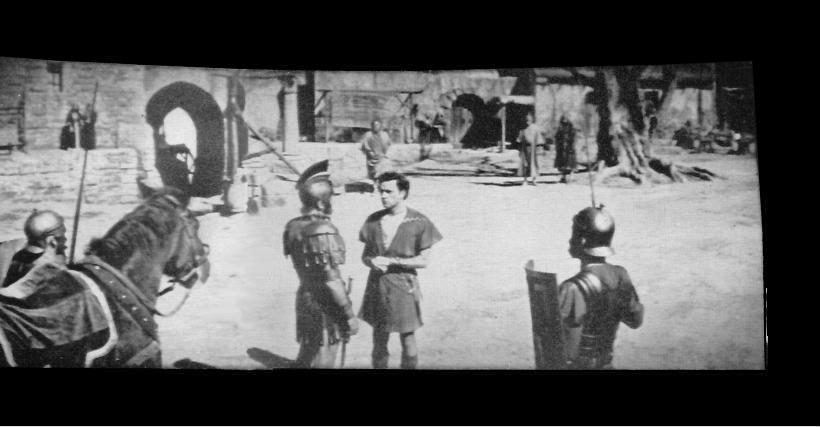ANAMORPHOSCOPE LENS UNIT is
slipped into mount on standard
35mm camera. Cinemascope
sets must be flooded with intense
light to compensate for stopped-
down lens opening which brings
all parts of the huge picture area
into sharp focus | |
 Trick lens condenses huge Hollywood sets, then stretches Trick lens condenses huge Hollywood sets, then stretches
 the picture out
again-across gigantic 80-foot screen. the picture out
again-across gigantic 80-foot screen.
|

CONVENTIONAL MOTION PICTURE LENS
records what it
sees without distortion, but its three-units-high by
four-units-wide proportions limit the field of vision.
| 
DUPLICATING HUMAN VISION,
Cinemascope's
anamorphic lens takes in an area one unit high by
three units wide, then compacts it on standard-width
film.
|
By Andrew R. Boone
IN A multimillion-dollar bid to woo
you and the missis back to the Lyceum,
Twentieth Century-Fox is blowing the dust
off a 16-year-old camera lens that turns out
the 'world's zaniest pictures. Point this oddly
shaped glass assembly at Burl Ives
strumming a guitar
|
in the shade of an old oak tree, and he comes
out looking like Frank Sinatra tooting an
oboe under a grapevine.
 And that's only half of it. To its right and
left this anamorphic lens has scanned twice
as much scenery as a conventional camera
lens, and squeezed it all on a single, standard width film. And that's only half of it. To its right and
left this anamorphic lens has scanned twice
as much scenery as a conventional camera
lens, and squeezed it all on a single, standard width film.
 Run this through a projector equipped Run this through a projector equipped
|






